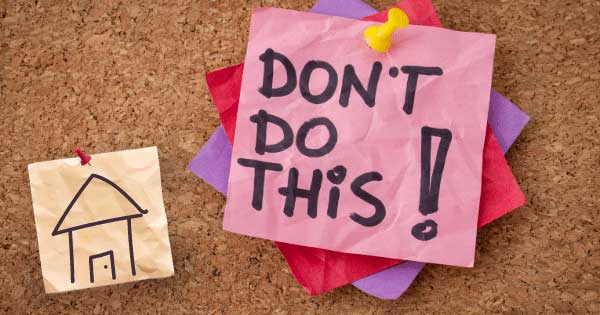
by California Casualty | Homeowners Insurance Info |
You want to take good care of your house. Not only does it provide shelter and a cozy environment for you and your family, it’s also your largest investment and you want to make sure it to holds up over time.
That’s why it’s important to avoid these unfortunately common and costly mistakes made by homeowners. Doing these things to your house could cost you big time now – or in the future, if you decide to sell.
Home Improvements
You should never…
Remove architectural features.
You may be tempted to remodel but make sure in doing so, you don’t destroy the charm of your home. That quaint tin ceiling, the chair rail molding along the wall and that detailed millwork are selling features to future buyers. Architectural details offer curb appeal and help distinguish your home.
Get rid of a bedroom or a bathtub.
Bedrooms sell homes, and similarly, so do bathtubs. Families are looking for both when buying a new house. That’s why you should never remove a bathtub in favor of a new shower. You’ll discourage families with kids and pets who need the tub. Similarly, taking down a wall to merge two bedrooms into one large one may be good for you, but it will detract from your home’s future sale price.
Cover wallpaper with water-based paint.
Water-based paint reacts with wallpaper glue, causing it to peel. So, if you paint over wallpaper with water-based paint, you’ll have a peeling mess on your hands. Instead, use oil-based primer to provide a protective barrier. Let it dry fully and then apply latex paint.
Leave cabinet doors on when you’re painting.
Painting your cabinets is an easy way to give your kitchen a facelift without spending tons of money. Just make sure that when you do, you remove the cabinet doors. That way, you won’t paint over hinges and hardware. It will turn out to be a much more professional job. Remember to keep track of which doors go in which spots. Label them with numbers under the hinge locations or back where it won’t be visible.
Do your own plumbing or electrical.
You may know a bit about plumbing or electrical. That doesn’t mean that you should add a bathroom or rewire your house. DIY projects are great when they match your experience. Hire a professional for jobs that are beyond your skill level to avoid costly mistakes.
Daily Living
You should never…
Flush flushable wipes.
They may say flushable, but they really aren’t if you want to keep water flowing through your pipes. Flushable wipes are made from synthetic materials that don’t break down. As a result, they can get stuck in your pipes or make their way to the sewer system and clog it up. The best choice always for toilets is toilet paper.
Let ceiling fans run.
You may think ceiling fans cool down your home. In reality, they move air around which helps your sweat evaporate more quickly. That’s what makes you feel cooler. It makes sense to run a ceiling fan in the room where you are; however, running it in every room when people are not present just doesn’t make sense. It just increases your energy bill.
Leave a brick in the toilet.
It used to be common for people to put a brick in their toilets to displace the amount of water used. That would ultimately save them money. But water causes bricks to crumble over time and those pieces can really damage or clog your pipes. Instead, try filling a half-gallon milk carton with sand and put it in the tank. That will save you a half-gallon of water for each flush. Or you could replace your toilet with a new model that uses less water.
Put starchy food down the disposal.
Starchy foods clump up when they come in contact with water. That’s great for cooking but terrible for garbage disposals, which can get easily clogged. Instead, put the potatoes, rice and oatmeal in the trash or compost pile.
Pour bleach or drain cleaner down the drain.
Diluted bleach is great for cleaning surfaces but not so great for pipes. That’s because this harsh chemical can damage them. Bleach also kills the good bacteria that break down waste. In that way, bleach can actually cause clogs. Drain cleaner also is hard on pipes. If you’re trying to clear a drain, use a pipe snake instead.
Outdoors
You should never…
Plant trees too close to your house.
Trees enhance our property and provide beauty and shade. But having trees too close to our homes can be dangerous. Branches can break off during storms, and in heavy winds, and limbs or trees can fall on your house. In addition, their large root systems can grow into your foundation, weakening it. Always take care to plant trees far enough away from your house: at least 30 to 50 feet away for medium and large trees and 10 feet away for smaller trees (less than 30 feet tall when full grown).
Plant invasive species.
You may love the Rose of Sharon, but if you plant it in your garden, you could find more than you bargained for. This pretty plant is an invasive species, meaning that it will easily take over your garden and your lawn. It’s tough to get rid of invasive species, so do yourself a favor. Don’t plant them in the first place and remove them as soon as possible.
Skip the last mow of the season.
Long grass provides a place for critters to hide. It also means that they will have a safe path to get into your home during the winter months. Keep your lawn short and you’ll be less likely to have these unwanted guests, plus your grass will be healthier.
Leave your hoses connected in winter.
Leaving your hoses attached can trap water which can freeze your pipes and damage them. Don’t make that mistake. Disconnect your hoses when you put away your lawnmower for the winter.
Park your car on your lawn.
It seems like common sense to park in the driveway or on the street and not on your lawn. After all, you could ruin your grass that way. But there’s another important reason. You could create a fire hazard from a hot engine on dry grass. You also may leak harmful chemicals onto your lawn. For these reasons, many local ordinances make it illegal to park on the lawn.
Luckily, home insurance covers repairs from most mistakes like these. An annual review of your homeowner’s policy will ensure you are fully covered. Talk to your insurance agent to see what’s covered under your current policy.
This article is furnished by California Casualty, providing auto and home insurance to educators, law enforcement officers, firefighters, and nurses. Get a quote at 1.866.704.8614 or www.calcas.com.

by California Casualty | Homeowners Insurance Info |
When storms and high winds take down trees, it can be frightening. If you’re not covered for the damage- the bill can be pretty scary, too.
If a tree fell on your home tomorrow, would you be covered by your insurance policy? Whether or not a fallen tree is covered depends on what caused the tree to fall and where it fell. Here’s everything that you need to know.
If a healthy tree falls on your home…
Strong winds can cause even healthy trees to fall. When a tree hits your house, your garage, your deck, your shed, or your fence, your homeowner’s policy usually covers the costs of repair. That also includes the cost of tree removal. Of course, you have to first pay your deductible. Check your property contract to see what is covered. There may be a cap – a maximum paid per tree. Finally, an annual policy review is a good time to review your coverages, before anything happens.
If an unhealthy tree falls on your home…
It’s a little different with diseased or dying trees. They’re more likely to fall—with or without a storm. As a homeowner, your responsibility is to check the trees on your property, trim the branches, and make sure the trees are healthy. If a diseased or dying tree falls on your home as a result of a severe storm or high winds, your policy most likely will not cover it.
If a tree falls but does not hit your home…
If a tree falls and doesn’t damage anything, that’s great (and lucky) news! However, a downed tree is considered a hazard and you are still responsible for removing it from your property. Unfortunately, in this case, your homeowner’s insurance does not cover that tree removal. The only exception is if the fallen tree is blocking a driveway or a ramp for someone who is handicapped. But proceed with caution – before you remove the tree, check with your local regulations. There are laws that govern tree removal in some states, and you may need a permit.
If your neighbor’s tree falls on your home…
It’s not uncommon for a tree in your next-door neighbor’s yard to fall on your home. If it’s a healthy tree that got knocked over in a storm, your policy will likely pay for damages just as if the tree fell from your own property. However, in this case, your insurer may go through your neighbor’s insurance provider for payment, and if that’s what happens, you will be reimbursed for your deductible. One word of warning: If a tree falls because your neighbor cut it down incorrectly, that’s on him to pay for damage and tree removal. Insurance does not cover that.
If a tree falls on your car…
It makes sense if you think about it. Homeowners’ policies do not cover trees that fall on cars. Car insurance policies do—but only those policies with comprehensive coverage. Check to make sure that you have comprehensive coverage so that you will be covered in the event of a fallen tree.
What To Do If A Tree Falls
-
- Assess the damage. Be careful and watch for fallen power lines as you do so.
- Determine who may be liable for the damage.
- Contact your insurance company if you believe you have a claim or if you are unsure.
- If you have a claim, make sure not to move anything until you have spoken with your agent. Take and submit photos or videos of the damage from all angles. Your insurer will guide you through the process.
- If you do not have a claim, you may still be responsible for removing a tree. Before contracting with a tree removal service, ask for proof of insurance. The company will then be responsible for any further damage they may cause.
Avoid a Disaster By Keeping Your Trees Healthy
-
- Water your trees regularly but don’t overwater. Consult a garden reference to determine how much water your species needs.
- Add mulch around the base of your trees. This will help protect the roots from weather conditions. It also will keep your mowers from bumping into the roots or the trunk.
- Visually inspect your trees for signs of disease. Look for discoloration and stunted growth or signs of pests. Mushrooms growing at your tree’s roots also can indicate decay.
- Remove any dead branches or large limbs that look like a liability. Prune your trees during the winter months.
- If you are removing a tree- be careful where you dig, as root systems of large trees can extend two to three times farther than the branches.
This article is furnished by California Casualty, providing auto and home insurance to educators, law enforcement officers, firefighters, and nurses. Get a quote at 1.866.704.8614 or www.calcas.com.
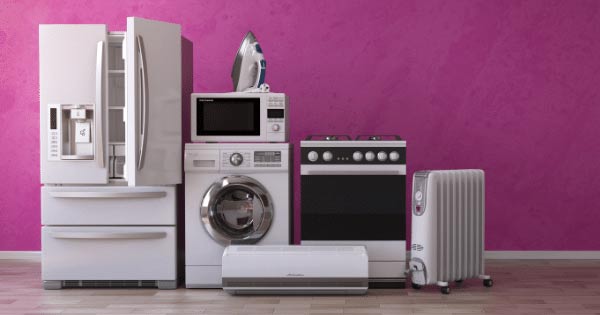
by California Casualty | Consider This, Homeowners Insurance Info |
Is there anything more frustrating than your washing machine breaking down in the middle of a cycle or your refrigerator dying in the middle of the night? Appliance repairs are not only inconvenient – and seem to only happen at the most inconvenient time – they can also be expensive. Fortunately, regular maintenance can help keep your appliances in good working order for years to come.
No one wants to deal with a broken device in the dead of winter… that’s why fall is the perfect time to do a quick check on all your appliances. Don’t worry, you don’t have to be a master mechanic; most of these maintenance tasks are easy to do on your own.
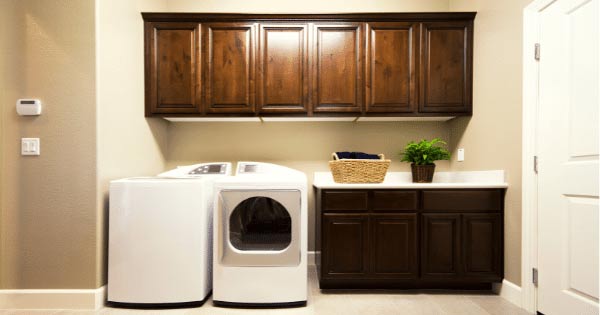
Laundry Room
Dryers need proper airflow in order to function. When the filter or exhaust is blocked, the heat buildup can cause a fire. Nearly 17,000 clothes fires are reported each year, according to the National Fire Protection Association. Keep your dryer from becoming a fire hazard by following these steps.
-
- Unplug your dryer if it’s an electric model. If it’s a gas model, turn off the gas.
- Pull the dryer away from the wall and detach the dryer duct, the flexible tube connected to the back of the dryer.
- Vacuum inside the duct and in the vent.
- Go outside your home and locate the exterior dryer vent. Remove the cover and vacuum in there as well.
- If your dryer vent is a long one, and the vacuum doesn’t quite get at the lint, you can buy a dryer vent kit that has brushes and tools to get inside.
- Inspect your duct for cracks or tears. If you see any, repair them with aluminum tape. (Do not use duct tape. Despite the name, duct tape does not work well with the heat of the dryer.)
- Reattach the duct.
- Remove the lint screen and vacuum in and around it. If it’s clogged, you can scrub it with warm, soapy water and then dry it with a towel before placing it back.
- Find the moisture sensor. It’s usually a thin metal bar below the dryer door. Clean it with a cotton ball and rubbing alcohol.
Washers benefit from regular maintenance. Not only will this help avoid breakdowns, but also leaks which can cause major water damage to your home. Regular care also will keep your machine clean and your clothes smelling fresh.
-
- Look for cracks, bulges, or leaks in your water hoses. That means you will need to replace them. Your owner’s manual also may recommend a timeframe for replacing hoses even if there is no damage.
- Make sure your washer is at least four inches from the wall to prevent hoses from twisting.
- Clean the lint collector, which is usually found near the center agitator tube or near the top of the machine.
- If you have a front loader, wipe down the door and rubber gasket area.
- Clean the soap scum buildup from your washing machine. Architectural Digest recommends this process using vinegar and baking soda.

Kitchen
Dishwashers can build up debris over time which can cause odors. Doing a deep clean periodically can help keep things fresh.
-
- Remove your racks and inspect them for chips or exposed metal. If you see any, you can buy special touch-up paint to help prevent rust.
- Check and clean your dishwasher drain.
- Remove and wash the filter.
- Run a wash cycle with a dishwasher-safe cup filled with vinegar on the top rack. Use the hottest water setting available.
- Sprinkle a cup of baking soda on the bottom of the dishwasher and run a short cycle.
Refrigerators can work harder than they have to, if not properly maintained. Plus, a clean refrigerator helps keep your food safe from germs.
-
- Your refrigerator’s coils could be clogged with dust, dirt, and pet hair. Use a handheld vacuum to remove this debris. You’ll find the coils either at the back of your fridge or underneath the front.
- Check the seals on your refrigerator’s doors. Make sure the door gaskets are “gunk-free.” This could affect the seal.
- Check the temperature to make sure that the fridge is at or below 40 degrees Fahrenheit and the freezer is at 0 degrees. You can buy a refrigerator thermometer if you have an older fridge without a temperature gauge.
- Your ice maker and water dispenser usually have filters that need changing. Check your manufacturer’s guide for instructions.
- Listen to your fridge. If it makes a loud sound, it may require some maintenance. (Fridges should have low-level hums that are barely noticeable.)
Stoves and ovens are well used during the fall and winter months, especially for holiday meals. Make sure yours are all in good working order.
-
- As you cook on your stove, the range hood draws the cooking steam upward and traps grease particles in its filter. This food-flavored grease attracts pests, so you’ll want to make sure it’s cleaned regularly. Home Depot offers the following steps to clean your range hood.
- Clean stovetop drip pans underneath your burners.
- Make sure the oven has a tight seal; otherwise, it could be losing heat. That will cause food to take longer to cook or cook unevenly. Feel along the seal that lines the door. If you find any broken, torn, or deformed areas, replace the seal, also known as a gasket.
Garbage disposals can host harmful bacteria or grow mold. This Old House suggests this approach: Pour a half cup of baking soda into the disposal. Wait 30 minutes, then pour in one cup of white vinegar. Let the mixture foam for 3 minutes, then rinse with hot water. Finally, grind up two cups of ice and a cup of salt while running cold water. You also can grind lemon peels at the end for a fresh scent.
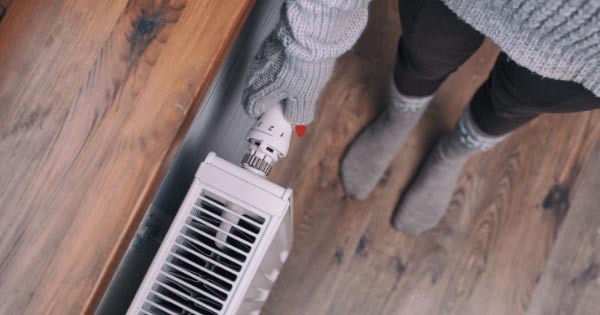
Heating
Furnaces have a lifespan of 20-30 years when properly maintained. Fall is the best time to check to see that your furnace is working properly before the cold weather descends.
-
- If your furnace is the kind that pulls air from outside, make sure that nothing is blocking the outdoor vent.
- Check that the ducts and vents are free of debris and dust, and securely fastened.
- Check the filter(s) and replace as needed.
- Know the signs that indicate you may need a new furnace. These include frequent breakdowns, a rise in energy consumption, and inconsistent heat where one room is cold and another hot.
Call a professional if you are unsure about maintaining your appliances. If you need to replace an appliance, it’s always good to get at least 3 bids. Make sure the bid includes the removal and disposal of the old appliance.
Your appliances aren’t the only devices that need to be checked in the fall. Help keep your HVAC running smoothly and your pipes thawed all winter by checking out our blog on fall maintenance for your home systems.
This article is furnished by California Casualty, providing auto and home insurance to educators, law enforcement officers, firefighters, and nurses. Get a quote at 1.866.704.8614 or www.calcas.com.
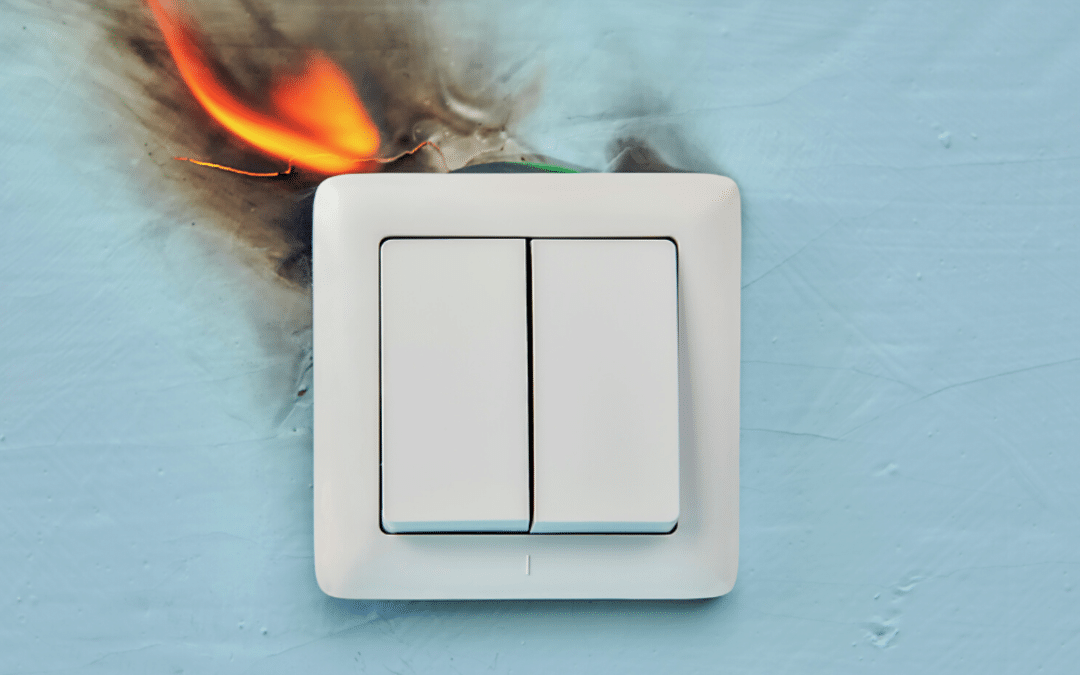
by California Casualty | Homeowners Insurance Info, Safety |
You’re used to seeing fire extinguishers in public buildings such as offices and schools in case of an emergency. But would you be prepared if a fire broke out at home? Almost 400,000 home fires happen every year in the U.S., causing thousands of deaths and millions of dollars in losses, but still,1 in 4 Americans say they don’t have a fire extinguisher in their home.
While you may not be able to predict a house fire, you can protect your family by being prepared. That includes owning fire extinguishers, knowing how to use them, checking your smoke alarms, and having a family disaster plan.
If you are one of the families that currently doesn’t own any fire extinguishers – we strongly recommend purchasing one as soon as you can. Don’t worry, there are other steps you can take to safely contain a small home fire. Here are some helpful home fire safety tips and guidance.
Know not all fires are the same.
Some fires are oil-based. Others are sparked by electricity or chemicals. Still, other fires are non-chemical. The way you put out a fire depends upon the type. It’s very important to know the kind of fire. In some cases, if you choose the wrong way to try to extinguish a fire, it could make it even worse.
Here’s how to put out a cooking fire.
Kitchens are common places for home fires. When you turn on your stove, you ignite a flame. If that flame combines with cooking grease, a fire can erupt. Fires also can easily start if you leave a stove unattended and the food or liquid in the pan or pot starts to burn.
Water will not work on kitchen fires- which are oil or grease-based. Upon contact with the oil, the water molecules quickly heat to steam and cause the oil to explode in all directions.
The best way to put out a cooking fire is to “snuff it out”. You want to cut the flow of air to the fire. Here are some options:
-
- If the fire is small enough, cover it with a metal cooking lid or cookie sheet. Keep it covered until it has cooled.
- Cover the fire with a fire blanket, a large piece of fire-resistant material such as fiberglass.
- Don’t swat at the flames. This could create airflow and make the fire worse, or ignite your clothes.
- Pour a large quantity of salt or baking soda over the fire. Make sure it is salt or baking soda and not flour. Flour adds fuel to the fire and will cause it to burn (or even explode).
- Turn off any heat source.
- If your fire is in the oven or microwave, keep the door shut. While it may look scary, the lack of air will eventually extinguish the fire.
Here’s how to put out a chemical fire.
Many common household items are chemical-based and highly flammable. This includes alcohol, rubbing alcohol, hand sanitizer, products in aerosol cans, nail polish and remover. Exposing any of these chemicals to an open flame is dangerous. Even doing your nails near a lit candle can spark a chemical fire.
Chemical fires are similar to cooking grease fires. You never want to use water to put out a chemical fire. It could cause the fire to spread.
Here’s how to handle a chemical fire:
-
- Cover the fire with a fire blanket.
- Pour a large quantity of baking soda or sand on the fire.
Here’s how to put out an electrical fire.
There are many possible causes of electrical fires. They can start due to overloaded circuits, faulty electrical outlets, and outdated appliances. Worn or frayed cords can cause heat to reach flammable surfaces in your home such as curtains and rugs. Installing a light bulb with a wattage that is too hot for the fixture can ignite fires. Electric space heaters also are known for starting fires when their coils are placed too close to couches, curtains, bedding, and rugs.
Never use water to put out an electrical fire. Water conducts electricity, and if you douse an electrical fire with water, you could be electrocuted.
Here’s some guidance on how to put out an electrical fire.
-
- If it is safe to do so, unplug the device causing the fire.
- Turn off the electricity on the house’s breaker box.
- Smother the flames by pouring baking soda onto them.
Here’s how to put out ordinary fires.
Ordinary fires involve paper, wood, clothing, trash, or plastic. This type of fire may occur if you knock over a candle or get a spark from the fireplace.
Unlike the other fires, these do respond well to water.
-
- Grab a bucket and fill it with water. Douse the flames.
- If you’re dealing with a wood-burning fireplace, you may wish to skip the water. That will create a mess and spread ashes throughout the room. Consider spreading out the logs and embers, and covering them with sand or baking soda.
Don’t try to put out a large fire by yourself.
If the fire becomes larger or out of control, you do not want to try to contain it. Your safety comes first. Get out of the house and call 9-1-1.
A fire extinguisher is a good investment for your home.
Finally, if your home does not have a fire extinguisher, you should invest in one. Fire extinguishers use either water, foam, dry powder, CO2, and wet chemicals to extinguish fires. Some use a combination. The basic classifications for home use include:
-
- Class A – This type is used on any fire that may be extinguished with water.
- Class B – This type is used for flammable liquids and grease fires.
- Class C – This type is used for fires involving electrical equipment.
Review your coverage with your homeowner’s insurance to know how you are covered in the event of a fire.
To help prevent fires in your home, see our blog on home fire safety tips.
This article is furnished by California Casualty, providing auto and home insurance to educators, law enforcement officers, firefighters, and nurses. Get a quote at 1.866.704.8614 or www.calcas.com.
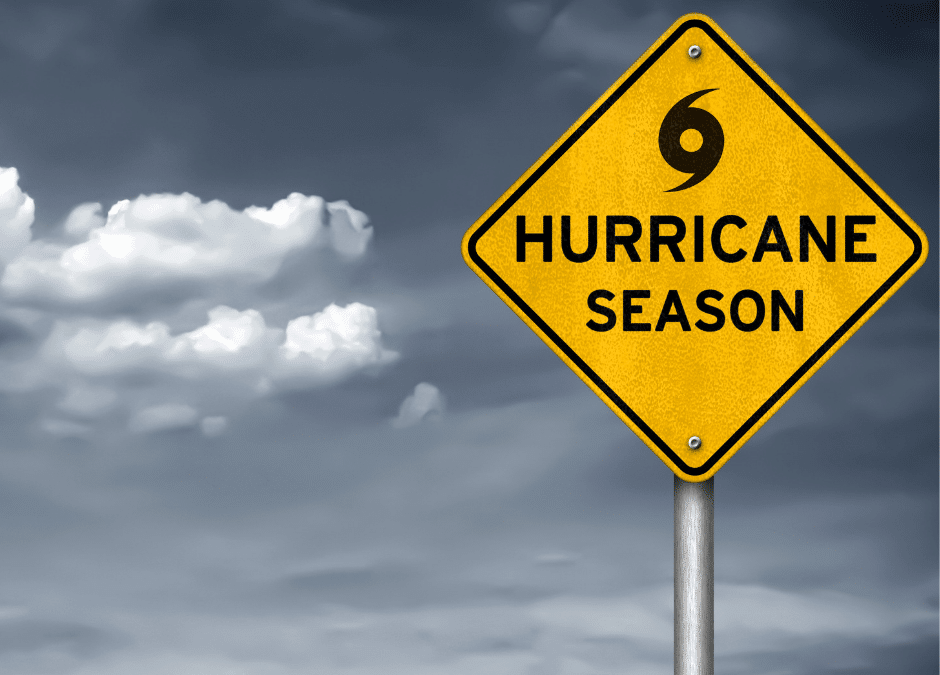
by California Casualty | Homeowners Insurance Info, Safety |
Hurricanes are natural disasters that bring demolishing winds and massive amounts of rainfall to land from the ocean. Coastal towns and cities across the world have been torn apart by hurricanes, but they aren’t the only ones who are usually affected. Hurricanes can cause significant damage to towns over 100 miles inland! September, is the most active month of the year, so now is the time to protect yourself and your family from these deadly natural disasters.
The relative lack of storms so far this hurricane season is bringing both good and bad news. While we are all taking a sigh of relief that there has yet to be a major storm, it could also be bringing a false sense of security. Many people in states where hurricanes usually hit may be “dropping their guard.” A new survey finds only a quarter of those living in hurricane-prone states think they are prepared if a monster storm hits, and nearly half of the respondents say they have yet to make any preparations this year.
Remember all hurricanes, no matter what size, have the potential to cause significant damage and life-threatening situations. Looking back at the destruction previous hurricanes like Harvey, Sandy, and Katrina have caused, it is essential that you make sure your family, home, and belongings are completely protected.
Important Hurricane Coverages:
- Flood Insurance. A regular home insurance policy will not pay for damages caused by flooding, but when you add flood insurance to your policy it will cover all damages that happen to your property, even if you rent! Be aware that when you add flood insurance there is a 30-day waiting period until it goes into effect, so that means it is often too late to purchase it when a hurricane or tropical storm is approaching.
- Scheduled Personal Property Insurance (Floater). Many people find that after a natural disaster their insurance coverage is limited on expensive personal items (ex. jewelry, furniture, technology, firearms, collectibles, furs, instruments, etc.). Floaters protect your personal items for their full value.
Steps to Protect Your Home & Family
- Heed evacuation notices and keep your car’s gas tank full in case of evacuations
- Stock up on essentials like bottled water, non-perishable food items, toilet paper, and pet food
- Make sure pets are kept inside, safe, and have a spot to do their “business”
- Have a family evacuation and communication plan
- Prepare an emergency kit (ex. flashlight, medicines, cash, and important documents)
- Get a NOAA Weather Radio
- Sign up for National Weather Service storm texts at https://www.weather.gov/subscribe-hurricaneinfo
- Charge cell phones and other devices and have charged spare batteries
- Install storm shutters or purchase 5/8 exterior grade or marine plywood to cover windows or doors
- Add straps or additional clips to roofs to reduce damage
- Bring in or secure anything that can be propelled by wind (ex. grills, bicycles, lawn furniture, play equipment, etc.)
- Know how to turn off propane tanks and gas lines
After a Hurricane Strikes
- Make sure you, your family, and pets are safe and secure
- Register yourself as “safe” on the Safe and Well website
- Follow all city boil and curfew orders
- Secure the property from further damage or theft
- Contact your insurance company as soon as possible
- Keep or document receipts and other expenses if you are evacuated or forced to find another place to live because of damage to your home or apartment
- Be wary of unscrupulous contractors following a natural disaster
It’s important to know that flooding and storm surge are the biggest threats to life when hurricanes hit. Leave low-lying areas, never drive or cross through running water, and avoid rivers, streams, and creeks; which could flash-flood.
For more information visit:
https://www.ready.gov/hurricanes
https://mycalcas.com/?s=hurricane
https://www.iii.org/article/preparing-hurricane
https://www.cdc.gov/features/hurricanepreparedness/index.html
https://www.redcross.org/get-help/how-to-prepare-for-emergencies/types-of-emergencies/hurricane.html
This article is furnished by California Casualty, providing auto and home insurance to educators, law enforcement officers, firefighters and nurses. Get a quote at 1.866.704.8614 or www.calcas.com.

by California Casualty | Homeowners Insurance Info |
Having extra cash on hand is always appreciated. One unexpected place you might find it is with your home insurance.
We’ve compiled some well-known — and lesser-known — ways that you can save money on home insurance. Follow these tips to lower your bills.
Raise your deductible.
The deductible is the amount that you pay before the insurance company pays a claim. Higher deductibles mean lower payments. According to NerdWallet, you could save 20 percent by raising a $500 deductible to $1,000. If you do increase your deductible, make sure that you can cover the costs of repairs should something happen.
Ask about discounts.
You may qualify for insurance discounts for being part of a professional association, such as groups for teachers, nurses or first responders. There are also discounts for being retired, for paying via automatic bank payments, and for paying in full upfront. You may qualify for a new home discount, or a discount if you have updated your utilities (electrical, plumbing, heating, cooling) in an older home. There are discounts for a new roof and an automatic sprinkler system. You can even be rewarded for being a loyal customer.
Remove attractive nuisances.
You may be paying extra for high-risk items. These attractive nuisances are potential dangers that could attract kids and cause injuries. Examples include trampolines, swimming pools, and playground equipment. If you are willing to get rid of these items, it may lower your payments.
Skip a payment.
Some insurance companies allow you to skip payments. At California Casualty, you have the option to skip payments in either the summer or the winter!. Ask your agent for details.
Take care of minor repairs.
Your home insurance policy can take care of both major and minor damage from a covered loss. But sometimes it’s easy enough to take care of those minor repairs on your own, out-of-pocket. That way you’ll avoid filing a claim and if you remain claims-free for a period of time, that qualifies for a discount, too.
Buy home and auto insurance from the same company.
When you bundle your home and auto insurance, you can often qualify for reduced rates, saving hundreds of dollars.
Make your home secure and disaster-resistant.
The better protected your home is, the less chance that there will be a claim. That’s why disaster-proofing and securing your home can save you in insurance premiums. To protect against disasters, consider storm shutter, impact-resistant roofing. Having a fire extinguisher could earn you a discount. For enhanced security, a burglar alarm and deadbolt locks can earn you discounts. While some of these repairs and updates are expensive, they will pay off in the long run. Remember that flood and earthquake insurance are not included in standard homeowner’s coverage. However, you can make home improvements that reduce their cost as well. Importantly, you will need a new home inspection before new rates can take effect, and you may need to pay for it.
Check your credit score.
Your credit score indicates your ability to pay your debts. Missing payments, not having a long credit history, and high credit card balances could create an unfavorable credit score. A credit score under 630 could increase your insurance rates, according to NerdWallet. You can get a free credit report once a year from the three credit agencies, TransUnion, Experian, and Equifax. Check your score, and take actions to improve it.
In addition, in some states, you can get your credit-based insurance score, which indicates how likely you are to file an insurance claim. If you are eligible for that report, you can find it at CLUE (Comprehensive Loss Underwriting Exchange) from LexisNexis
Review your insurance limits annually.
If your insurance is billed to your mortgage bank, you may not think much about your annual premiums. But it’s a good idea to review your policies annually to make sure you’re not paying for coverage that you no longer need.
This article is furnished by California Casualty, providing auto and home insurance to educators, law enforcement officers, firefighters, and nurses. Get a quote at 1.866.704.8614 or www.calcas.com.









